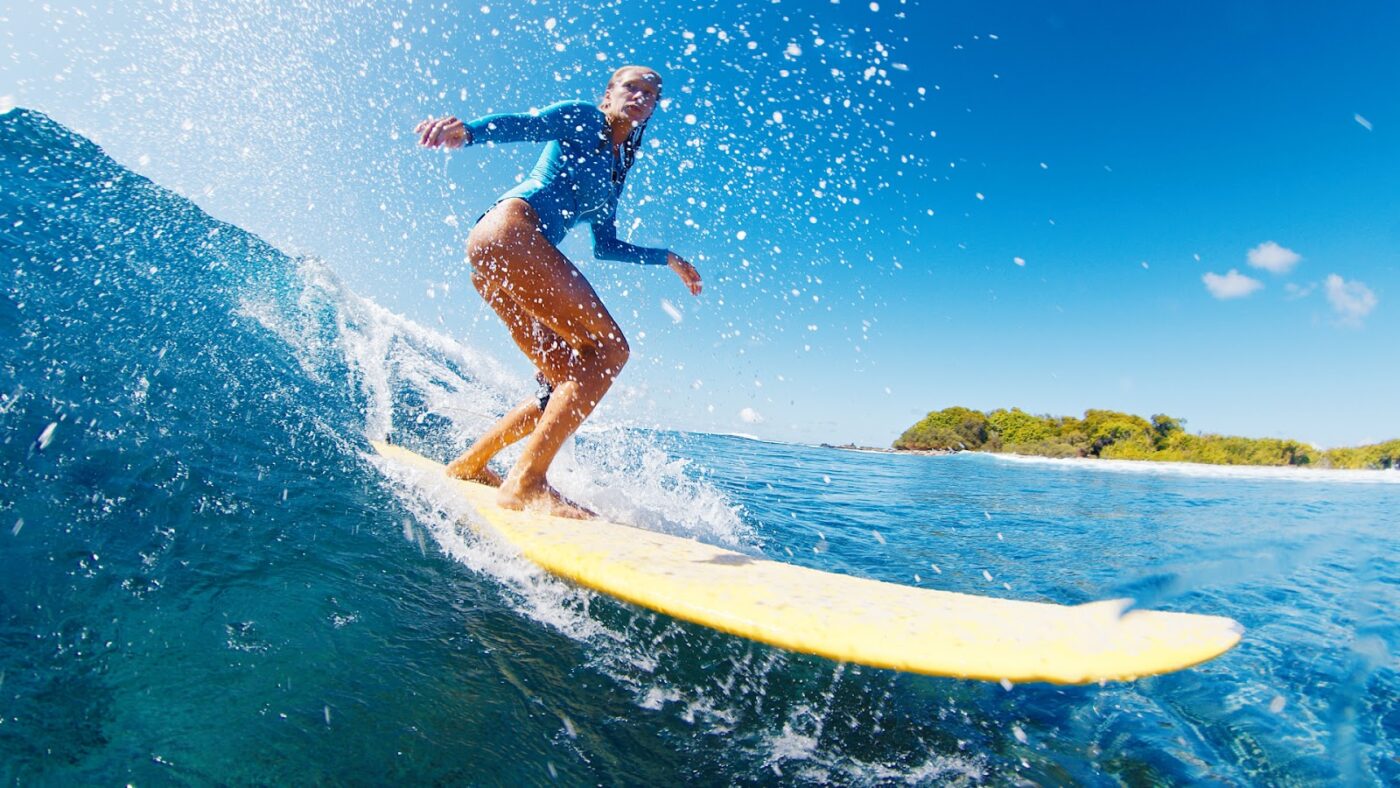TL;DR
Year-Round Waves: Winter (big NW swells – North/Central) and Summer (gentler S swells – South) provide consistent surf.
Three Distinct Regions:
- Southern California (San Diego to SB): Classic warm(er) water, iconic spots (Malibu, Trestles), consistent summer S swells, HUGE crowds, surf industry hub.
- Central Coast (Ventura to Santa Cruz): Scenic, cooler water, fewer crowds, kelp forests, shark presence noted (but attacks rare), charming surf towns.
- Northern California (SF to Oregon): Raw power, frigid water (thick wetsuits year-round), massive winter waves (Mavericks 50-80ft), remote breaks, fiercely local, experts only.
Spots by Skill:
- Beginner: Cowell’s (Santa Cruz), Doheny (Dana Point), Pismo Pier (forgiving waves, sandy bottoms).
- Intermediate: Malibu (crowded point break), Swami’s (Encinitas), Campus Point (Santa Barbara).
- Advanced: Mavericks (big waves/danger), Ocean Beach SF (powerful/unpredictable), The Wedge (shorebreak/bodyboarding).
Key Tips:
- Best Time: Sept-Nov (good swells, warm water, fewer crowds).
- Respect: Local lineup hierarchy, understand surf etiquette.
- Gear: Wetsuit thickness increases dramatically northward (3/2mm SoCal summer, 5/4mm + hood/booties NorCal year-round).
- Safety: Know rip currents, cold water risks (hypothermia), marine life awareness.
- Environment: Pollution/climate threats exist; pack out trash, respect wildlife.
In short: California has so much surfing variety. Find warm, gentle waves perfect for learning down south. Central spots offer beautiful scenery without big crowds. Head north for powerful waves testing experienced surfers. Consistent swells hit the coast all year. Just match a spot to your skill, how much cold or crowds you can handle, and the kind of wave you want.
Why California Rules Surfing
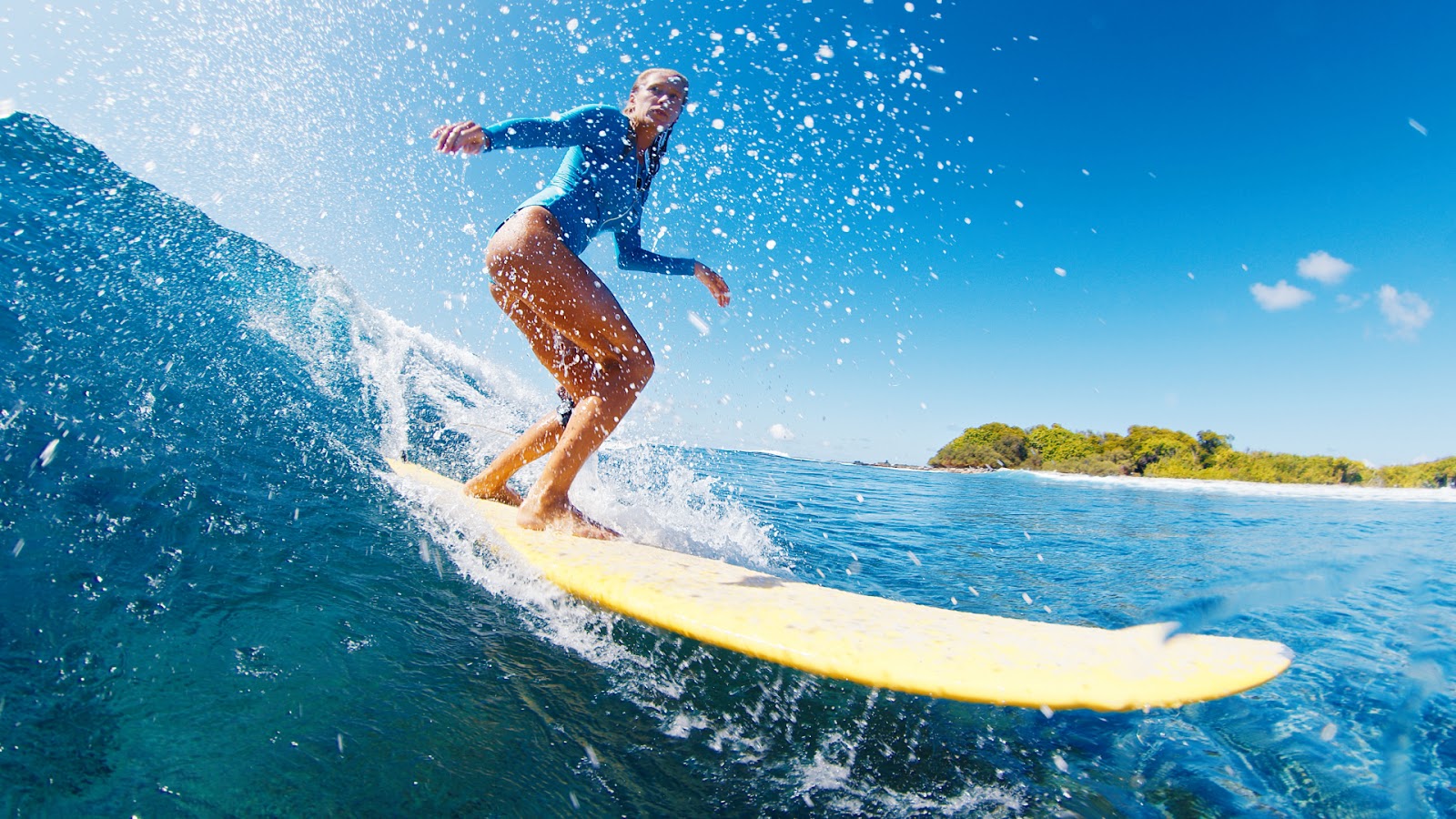
Stretching over 840 miles, California’s rugged coast is pretty much surfing’s holy grail. Find sunny San Diego beaches or wild, untamed breaks up north. This coastline delivers for every surfer. Top-tier waves blend with lively surf culture in this place. Legends start here; dreams form on moving water mountains.
We’ll check out famous spots, secret finds, and local flavors for every ability. Beginner or experienced surfer, California’s varied surf scene has a wave with your name on it.
California gets waves all year, and that’s pretty special. Winter brings powerful swells from the north and west, fueled by Pacific storms. Come summer, gentler south swells arrive, generated by tropical storms near Mexico. This two-season setup means surf is almost always on.
Different wave types add to the appeal. Beach breaks offer sand-bottom waves, forgiving and great for learning. Reef breaks produce hollow, powerful waves testing skilled surfers. Point breaks give those long, peeling rides, sometimes going hundreds of yards.
California’s also where modern surf culture really kicked off. Legendary board makers, photographers, and surfers all call this coast home. Surfing’s cultural roots run deep here, from Gidget to the Beach Boys.
California’s Three Surf Regions
Southern California: The Industry Hub
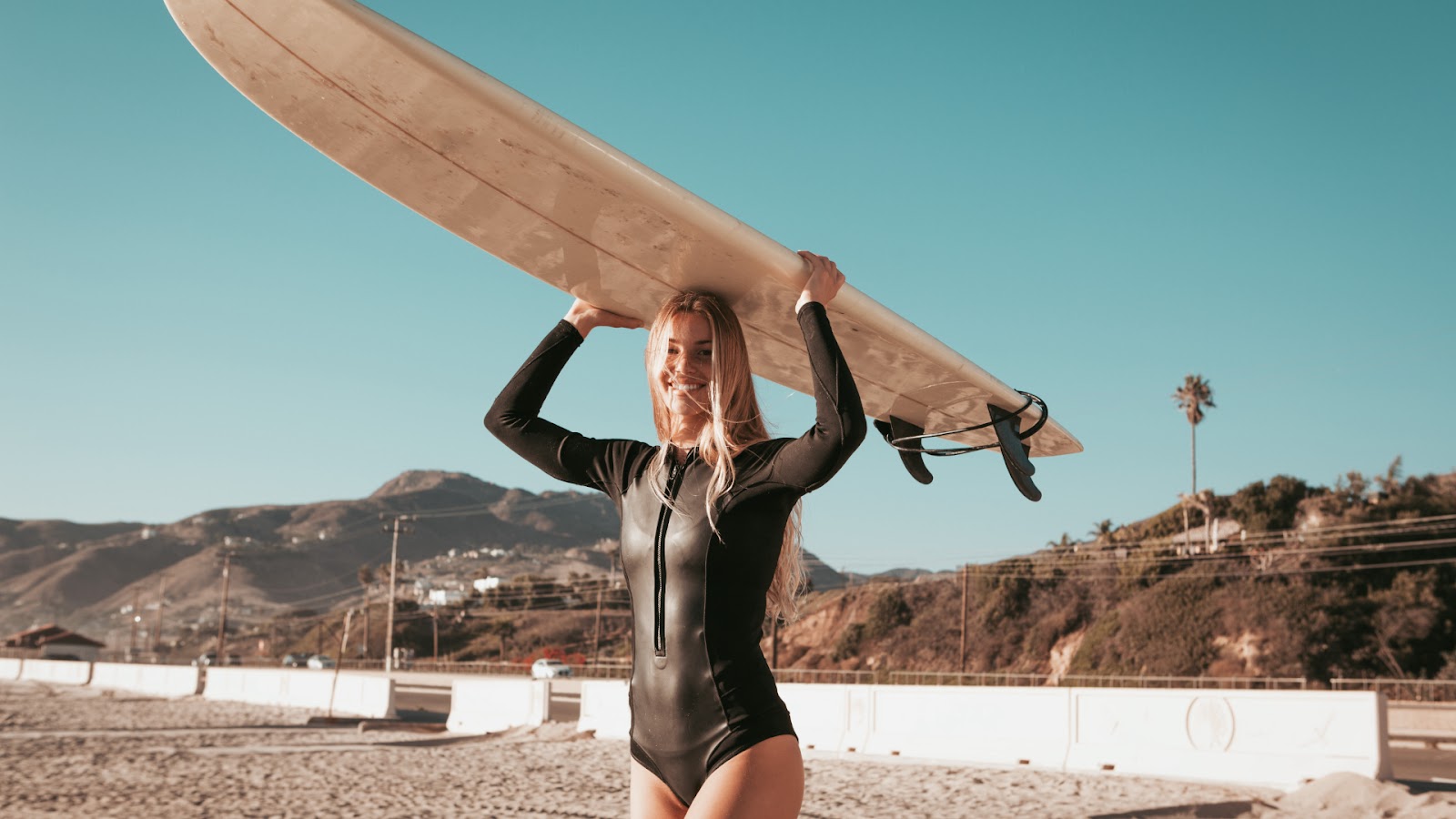
This stretch from San Diego up to Santa Barbara is surfing’s classic picture. Water gets chilly in winter, around 52°F, but warms up nicely to 74°F come summer.
When south swells hit in summer, legendary spots like Trestles and Malibu really come alive. Winter waves tend to be smaller, though still plenty good for riding.
You get amazing consistency and warm water, but prepare for company:
- Expect crowds, especially on weekends at famous breaks – it often feels like a contest.
- It’s no accident this area earned the “Surf City USA” tag.
- Big surf brands, board shapers, and media companies all call this home base.
Central Coast: Hidden Beauty
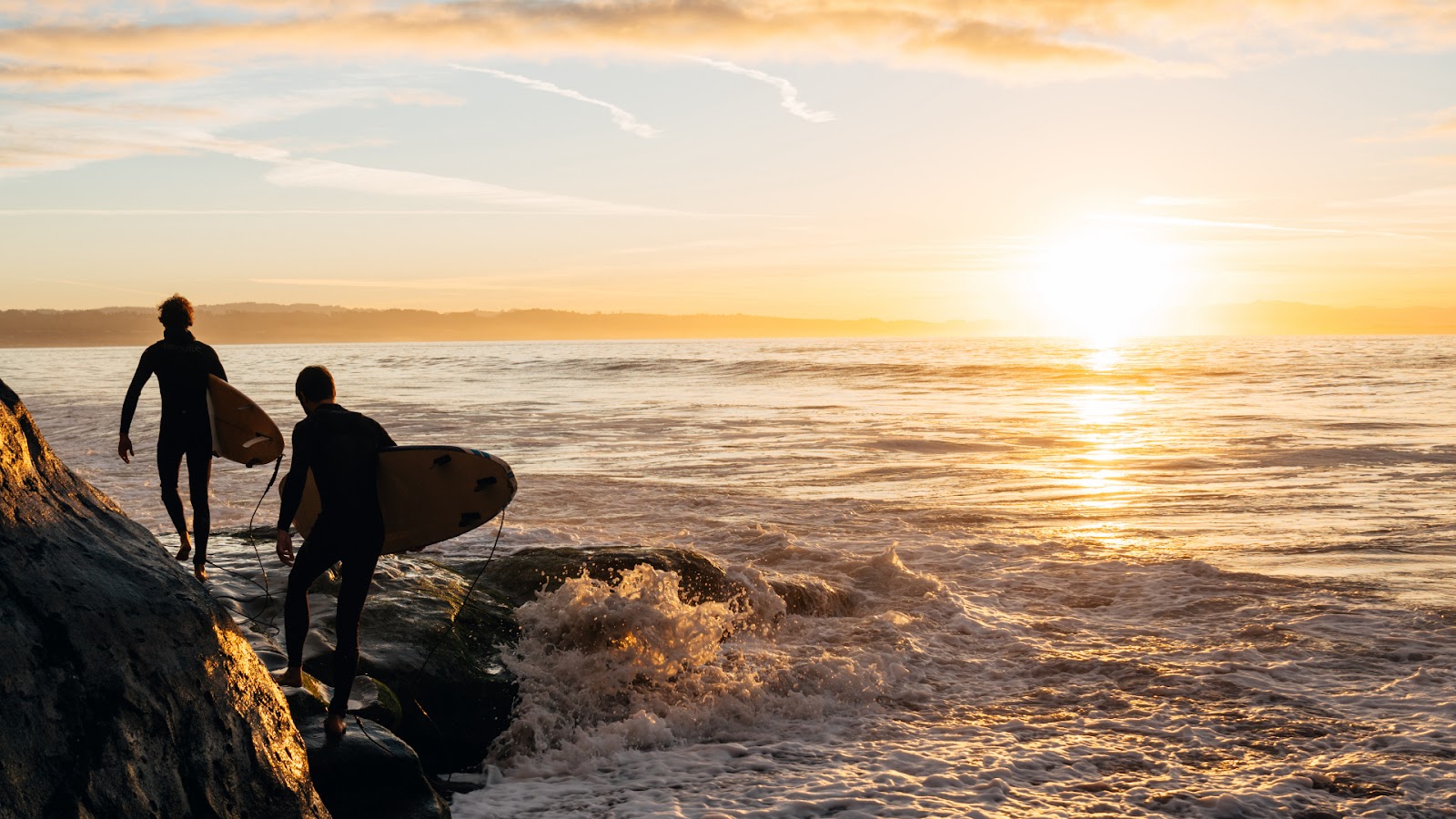
Surfing from Ventura to Santa Cruz? It’s arguably California’s most scenic stretch. Expect cooler water, usually between 50 and 54°F. That chill helps keep crowds down. You’ll find dramatic backdrops: rugged cliffs, thick kelp forests, and plenty of marine life.
Sharks are a reality here, especially near remote spots like Jalama. Keep that in mind:
- Great whites do patrol these waters.
- Actual attacks are still rare though.
- Most surfers paddle out regardless.
The vibe? Low-key. Surf villages like Cambria and Cayucos hold onto classic California charm. They feel quieter, less built-up than spots further south. Waves here reward surfers ready for a bit of adventure and exploration.
Northern California: Raw Power
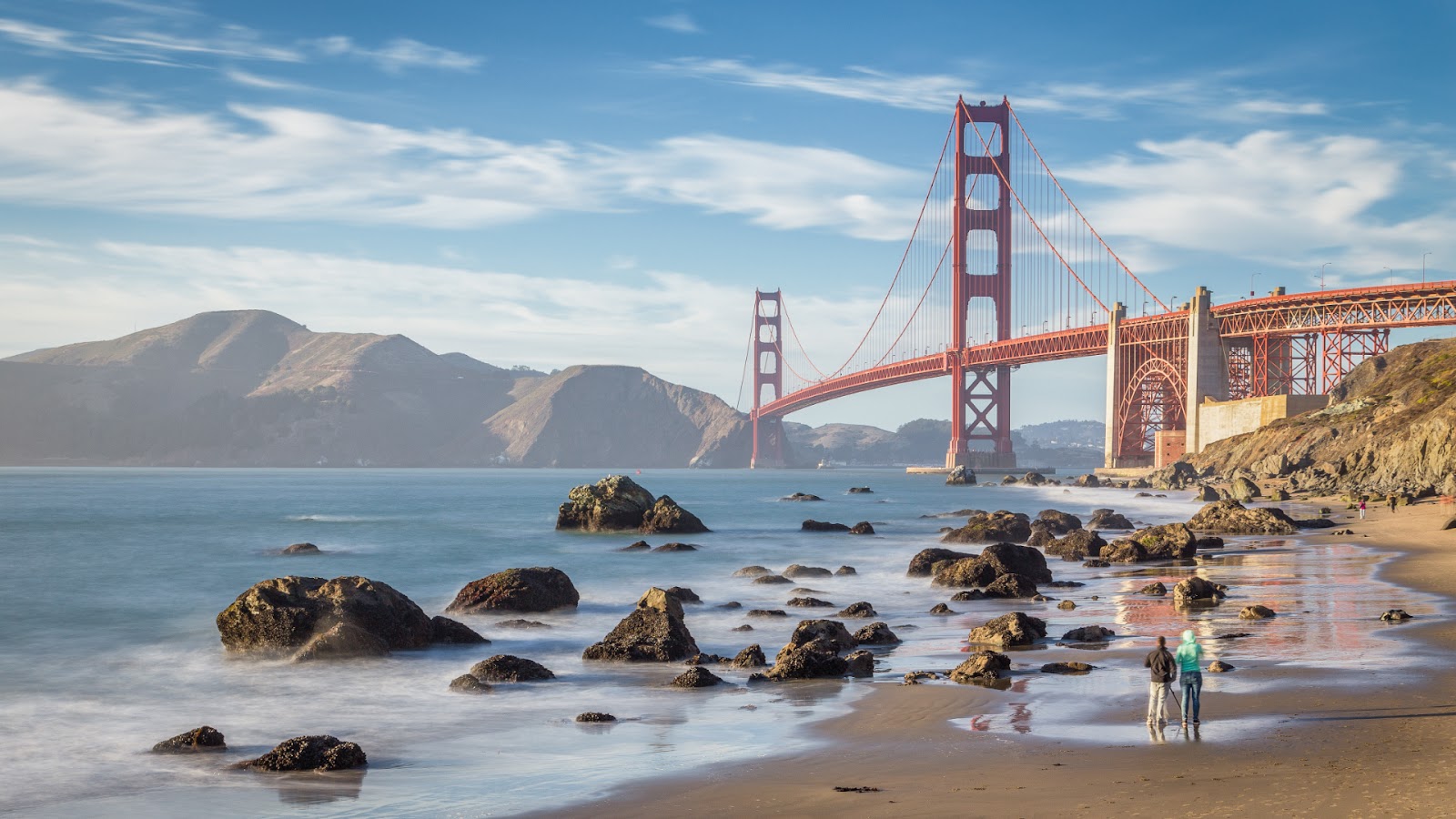
Surfing between San Francisco and Oregon? It’s tough. Really tough. Water’s so cold you need a thick 5/4mm wetsuit, plus hood and booties, every single day. Forget warmer months bringing relief – it stays chilly.
Winter steps it up. Huge swells roll in. At famous spots like Mavericks, waves can tower over 50 feet. This coastline demands serious respect.
- Local Knowledge: Crews here protect their waves fiercely.
- Remote Feel: Many breaks sit deep in wilderness, offering a raw, basic surfing vibe.
- Dedicated Crew: Only truly committed surfers handle these conditions day in, day out.
It’s a challenging, powerful stretch of coast.
Top Surf Spots by Skill Level
Beginner Paradise
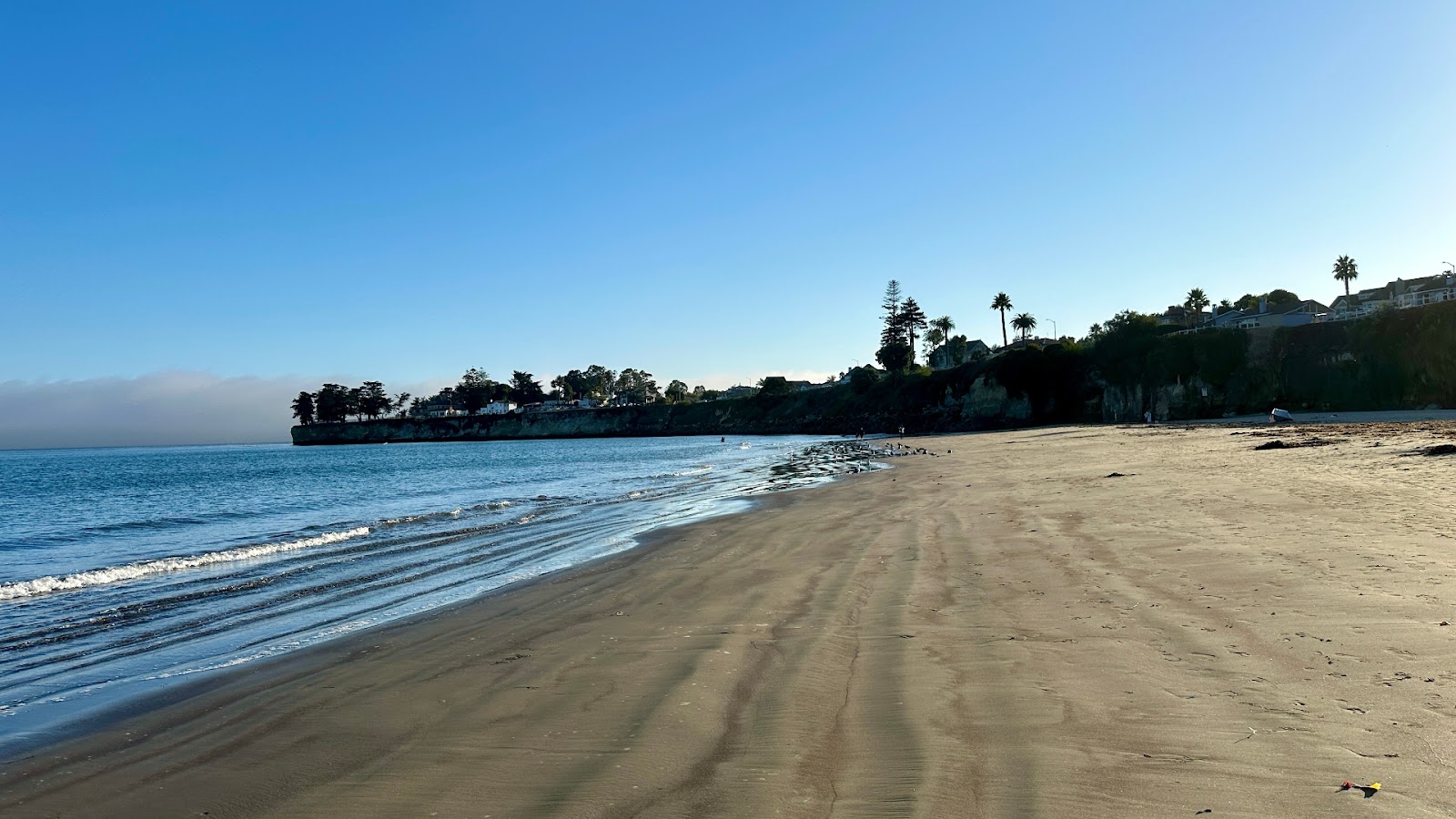
Cowell’s Beach in Santa Cruz sits practically next door to the famous Beach Boardwalk. Waves tend to be gentle here, rolling over sand. It’s a top pick for taking your first surf lesson. In summer, waves are usually the smallest and easiest to handle.
Down in Dana Point, Doheny State Beach built its name as a place to learn. Waves are soft, break slowly over a long stretch, and rarely slam shut fast. You’ll find plenty of surf schools operating on this beach. That whole “No Fail Surf Lesson” idea? It pretty much started right at Doheny.
Up at Pismo Beach Pier, the waves often close out gently over sand. Even when they get bigger, that sandy bottom makes wipeouts less scary for new surfers. It’s versatile too – sometimes you’ll see pros surfing here during World Surf League contests.
Key beginner points:
- Cowell’s: Gentle waves, sandy bottom, ideal for lessons. Smallest waves in summer.
- Doheny: Famous learning spot, soft slow waves, many schools. Birthplace of “No Fail” lessons.
- Pismo Pier: Forgiving closeouts, safe sand bottom even with size. Hosts pro events showing its range.
Intermediate Classics
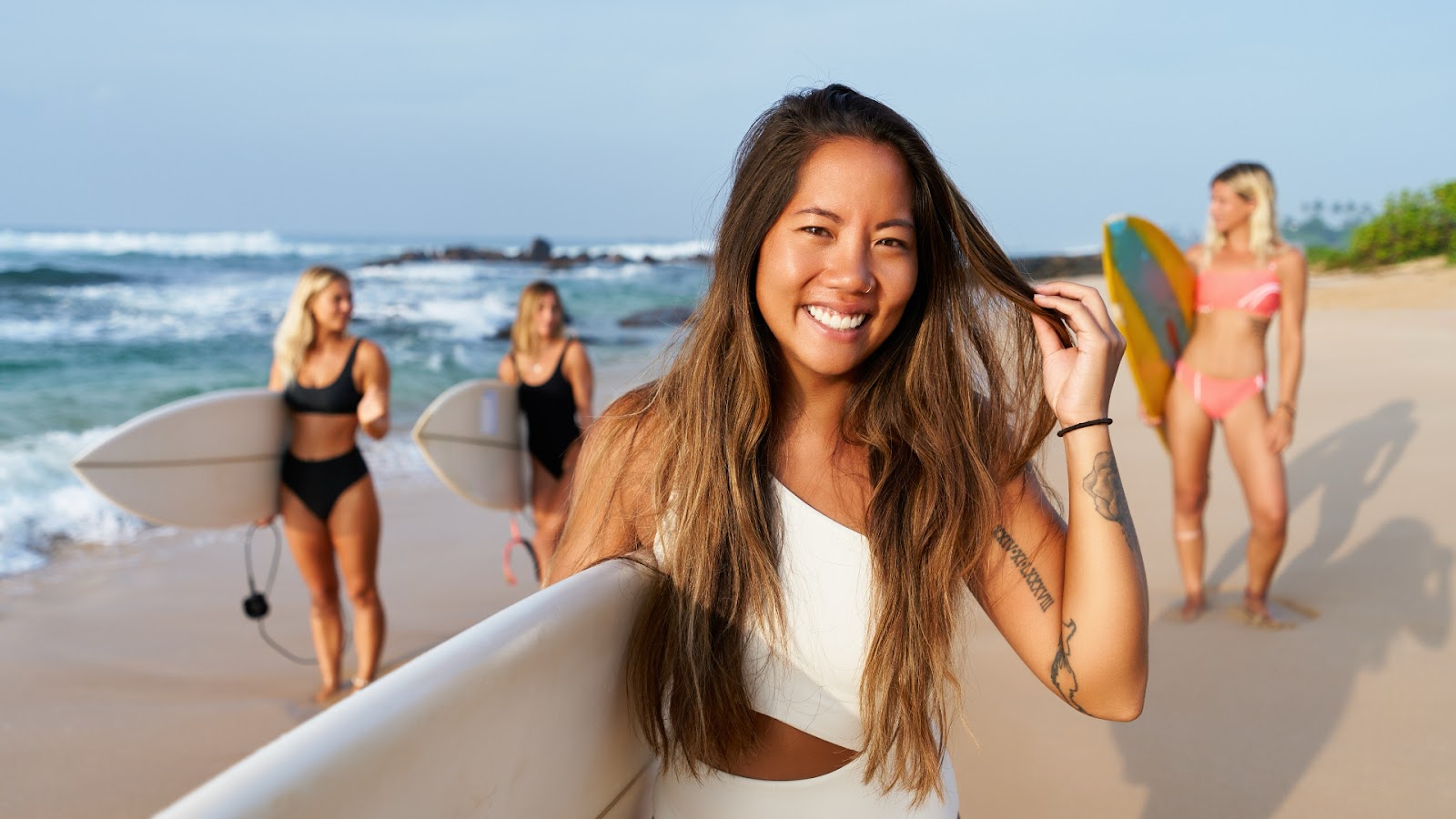
Malibu’s Surfrider Beach is the California surfing icon. Its famous right-hand point break serves up long, peeling rides, especially when south swells hit in summer. Longboarders really dig Malibu’s gentle, predictable waves. But let’s be honest: crowds are a major hassle. Weekends might see hundreds of surfers packed together, all hunting the same wave. Your best shot at space? Hit it early in the morning.
Down in Encinitas, Swami’s breaks are right below a unique spiritual retreat building. This right-hand point offers consistent, rolling waves – great for surfers building skills. Palm trees and clifftop views make it pure California.
Up near Santa Barbara, Campus Point acts like UC Santa Barbara’s personal surf classroom. Gentle, peeling waves there are perfect for learning basics. Surfing next to campus adds a distinct college feel to sessions.
- Malibu (Surfrider Beach): Iconic right point break. Long summer rides, loved by longboarders. Expect big crowds; dawn patrol recommended.
- Swami’s (Encinitas): Consistent right point break below a spiritual retreat. Rolling waves suit progressing surfers. Classic Cali scenery.
- Campus Point (Santa Barbara): Gentle peeling waves ideal for beginners. Strong university vibe right next to UCSB.
Advanced Challenges
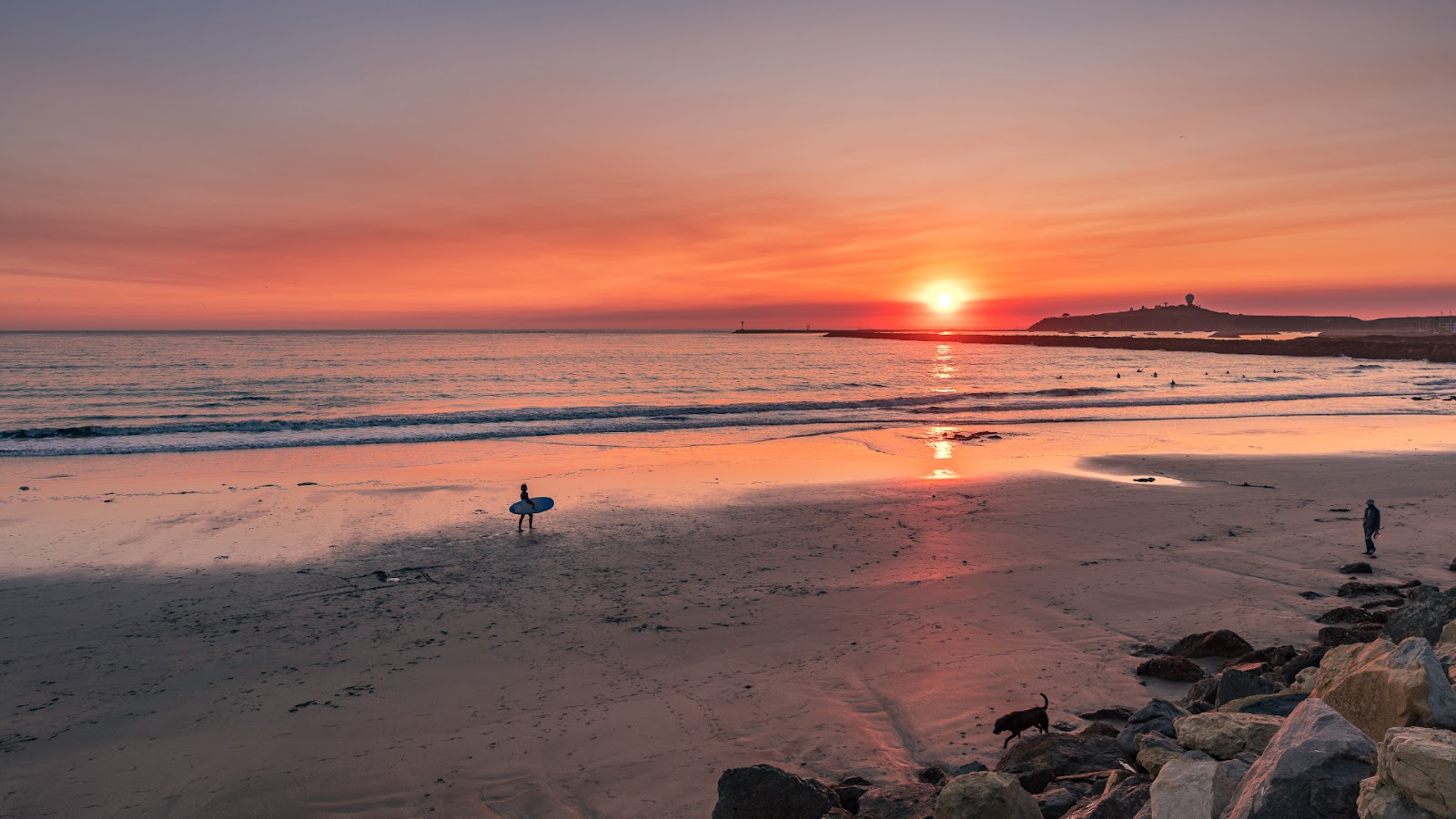
Mavericks near Half Moon Bay churns out California’s biggest surf. Winter storms build waves hitting 60, even 80 feet tall. Only top big-wave surfers go out there. Why? Think freezing water, crazy strong currents, and hidden rocks – it’s seriously dangerous. Contests only happen by special invite. Surfers like Grant Washburn and Jeff Clark were first to ride it years ago. When swells hit, people watch safely from cliffs above.
Down the coast, Ocean Beach in San Francisco offers a different beast. It’s a beach break known for raw power and surprise. Winter swells push waves over 15 feet high. Getting out back is a long, hard paddle against brutal currents. Fog often rolls in, thick enough to hide other surfers, making everything harder.
Newport Beach holds The Wedge. This spot creates a unique, punishing shore break. Waves slam straight onto sand with incredible force. Because it’s so powerful and incredibly shallow, bodyboarders rule here. Getting hurt happens a lot.
Mavericks:
- California’s largest waves (60-80 ft winter swells).
- Elite surfers only; very dangerous (cold, currents, rocks).
- Invite-only contests; pioneered by local legends.
- Watch from cliffs.
Ocean Beach (SF):
- Powerful, unpredictable beach break.
- Big winter waves (15+ ft), brutal currents, long paddle-outs.
- Frequent fog adds difficulty.
The Wedge:
- Unique, powerful shore break slamming onto sand.
- Dominated by bodyboarders due to intensity and shallow water.
- Injuries are common.
Seasonal Swell Guide
Winter (Dec-Feb): Big northwest swells hit Northern and Central California hard. Famous spots like Mavericks, Rincon, and Steamer Lane really wake up with winter storms. Ocean water gets colder now.
Summer (Jun-Aug): South swells from storms near Mexico hit Southern California. Trestles, Malibu, and other SoCal breaks shine. Water warms up, sometimes reaching the 70s (°F).
Spring & Fall: These shoulder seasons mean fewer people out and combo swells. Conditions can be really good. Offshore winds happen more often then. Fall, especially, tends to offer California’s finest overall surf.
Local Knowledge and Etiquette
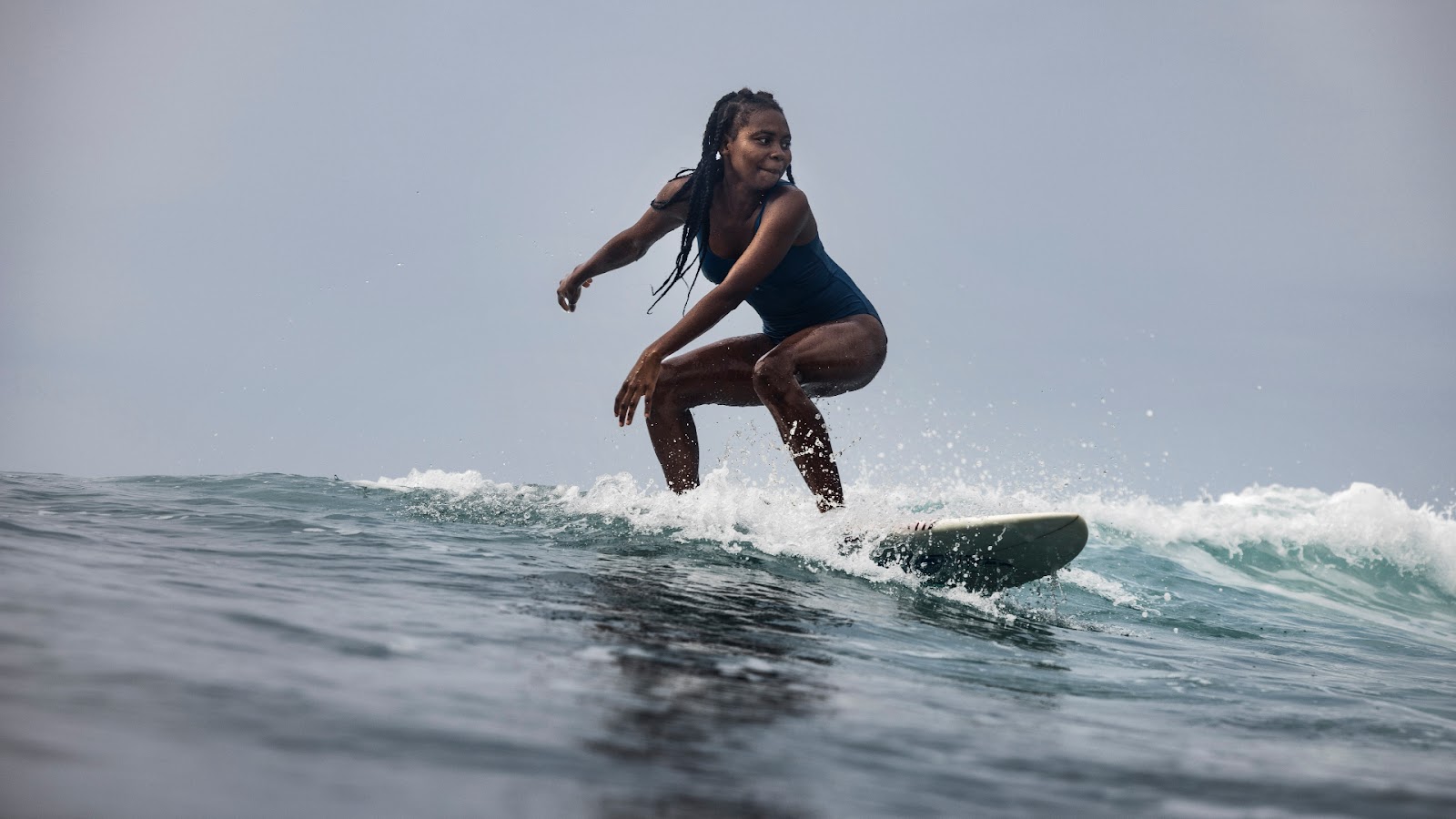
Respect the pecking order at famous breaks. At Steamer Lane, locals guard “The Point” fiercely. They’ll usually point beginners toward the “Indicators” section instead. Knowing these unspoken rules helps avoid problems.
Shark awareness differs by area. Spots on the Central Coast, like Jalama, mean staying extra alert. Up north, surfers often see shark risk as just part of the deal. Actual attacks are rare, but the thought definitely sticks with you.
Wetsuit Needs:
- Southern California: Go 3/2mm in summer, 4/3mm in winter.
- Central Coast: Use 4/3mm most of the year, step up to 5/4mm for winter.
- Northern California: You need 5/4mm plus a hood and booties all year.
Planning Your California Surf Trip
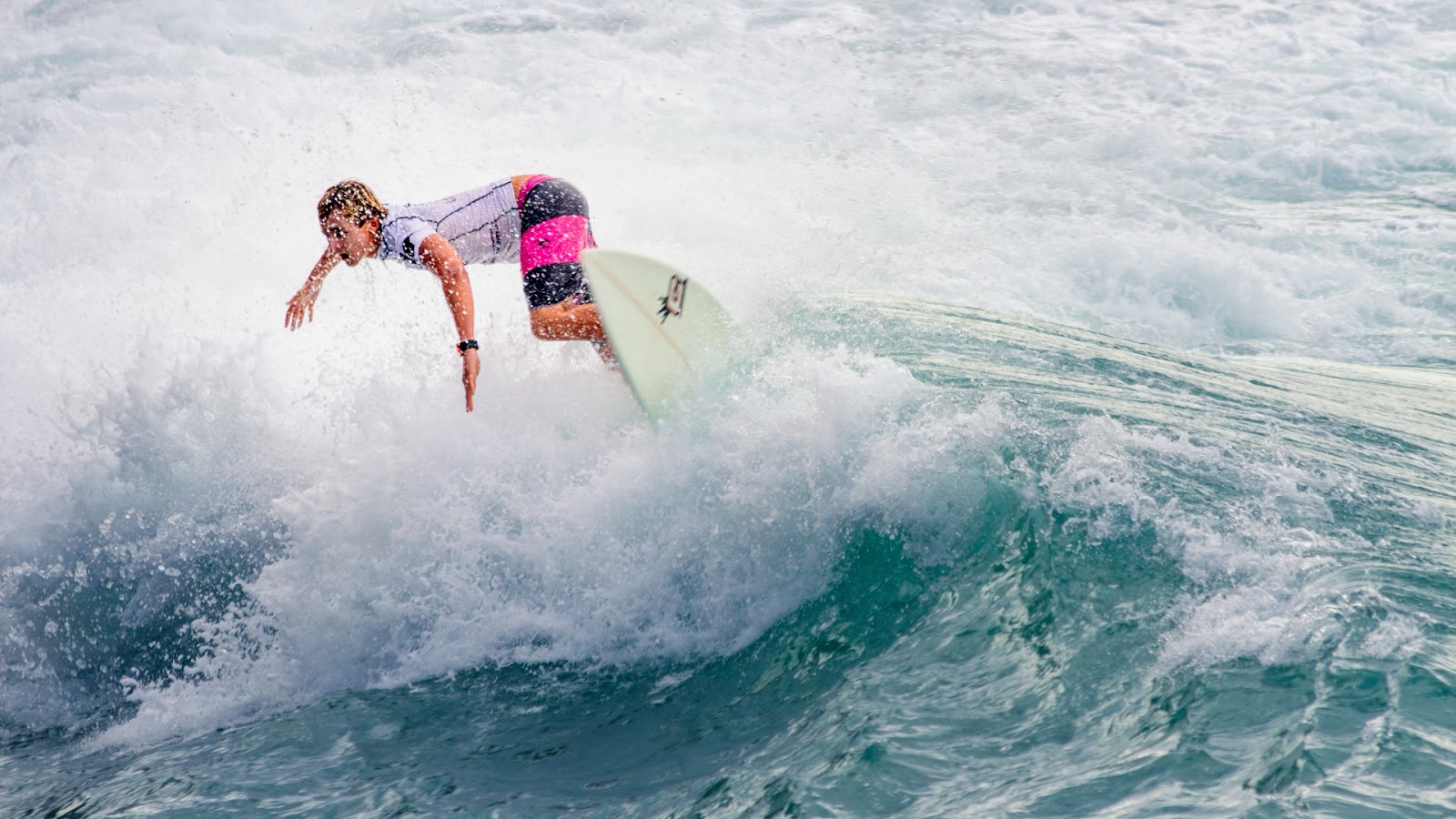
Best overall: September to November hits the sweet spot. Good swells, warm water, and fewer people crowd breaks.
Beginners: Head to Southern California May through August. You get the warmest water and gentlest waves during those months.
Advanced surfers: December to February delivers biggest swells, mainly across Northern and Central California.
Boards: Pack multiple boards for California’s changing conditions. A longboard works great for summer in SoCal. Up north, a step-up board handles winter’s heavy stuff.
Safety Considerations
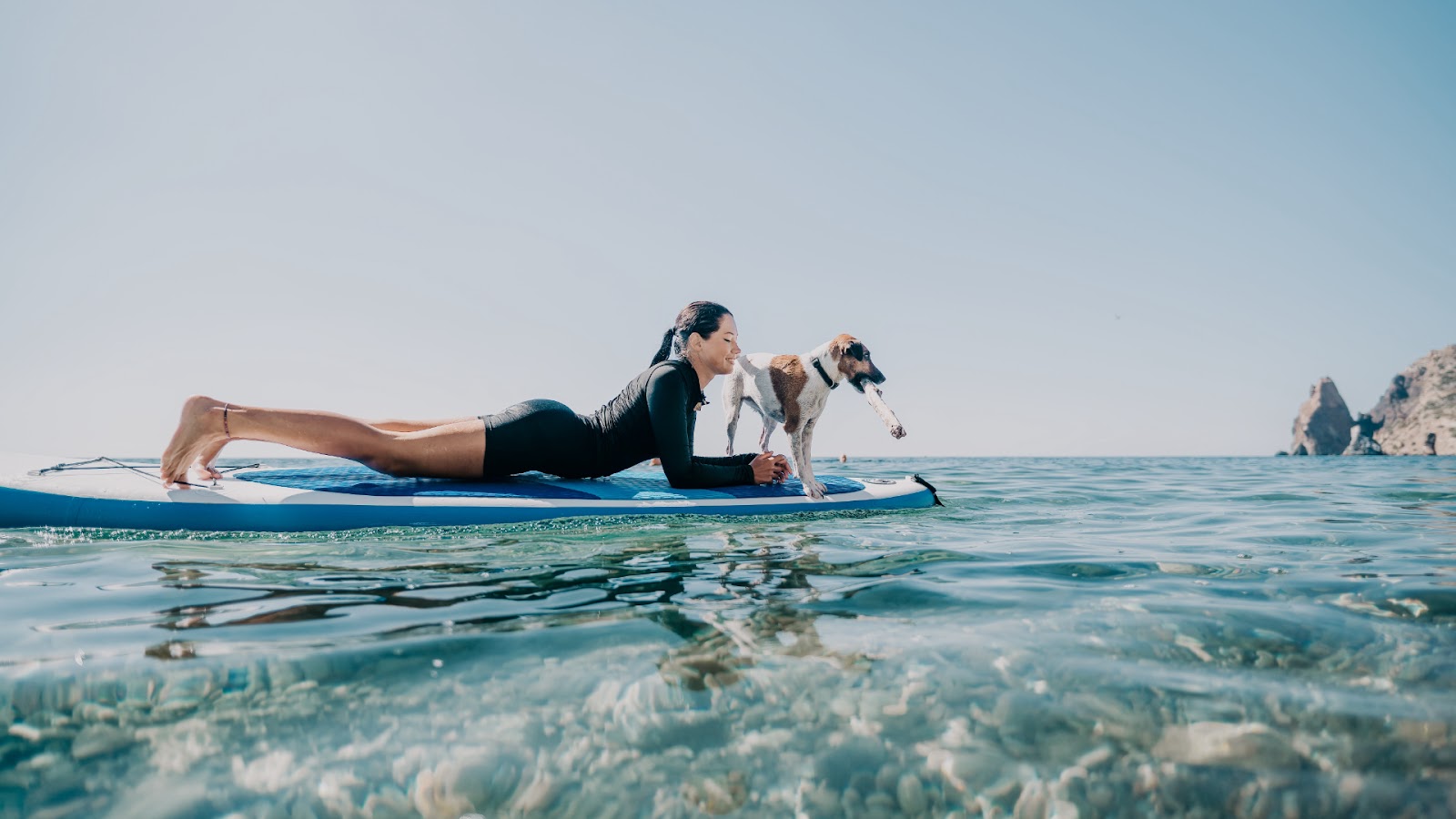
Rip currents happen on many California beaches. Before swimming somewhere new, learn how to spot them and get out safely.
You’ll see marine life like seals and dolphins. Sharks appear sometimes too. Most meetings aren’t a problem, but staying aware helps avoid shocks.
Water stays cold, especially north of Point Conception. A proper wetsuit is needed. Hypothermia sets in fast in 50-degree water. It gets dangerous quickly.
Surf Forecasting Resources
Surfline: Check it for detailed California surf forecasts and live camera views.
Magic Seaweed: See what it says for different forecast models and local spot knowledge.
NOAA Buoys: Get real-time wave and wind info. Essential for serious surfers doing their own forecasts.
Environmental Awareness
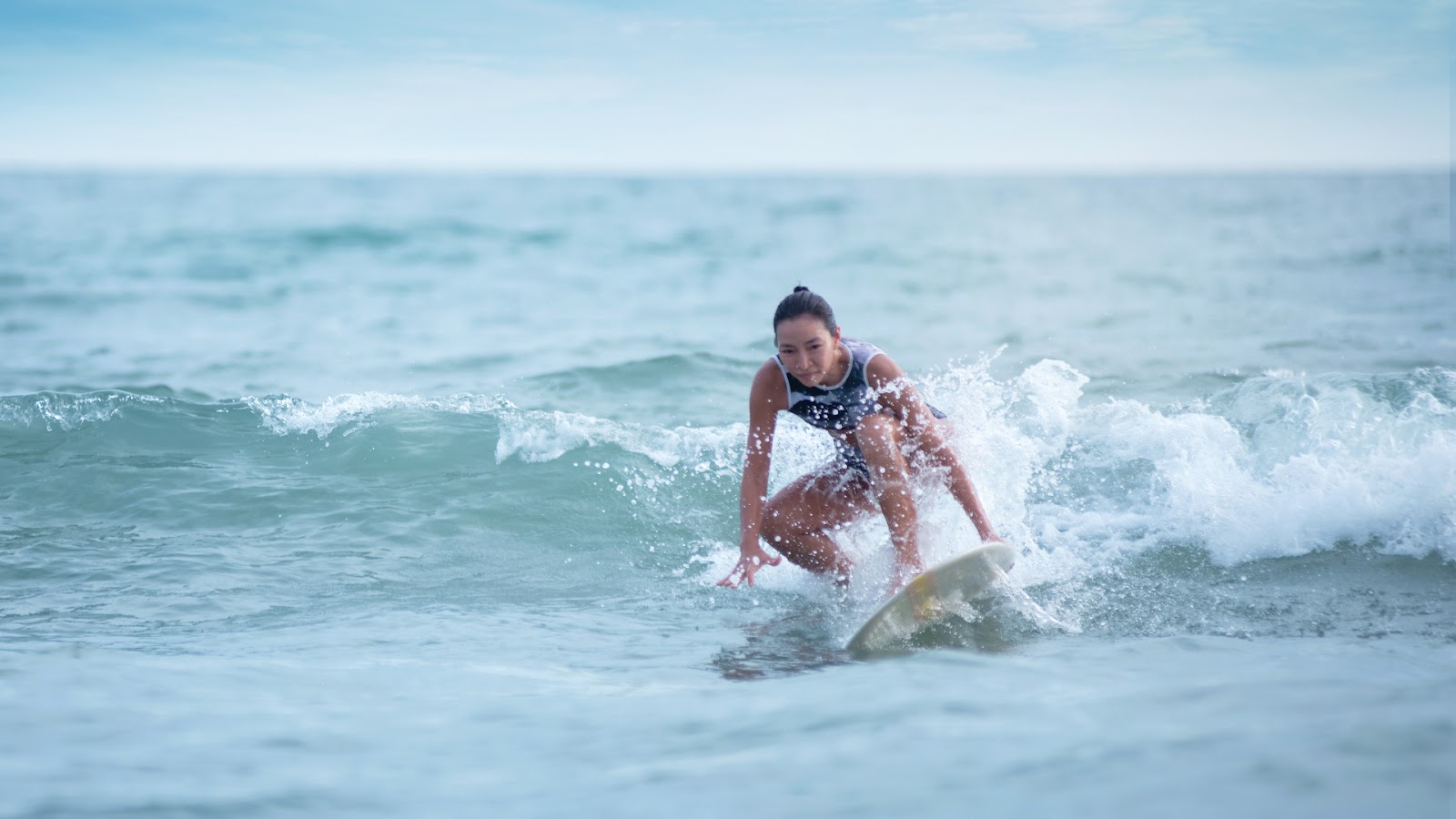
California surf spots face real environmental problems:
- Pollution hits urban beaches hard, like Manhattan Beach and Huntington Beach.
- Climate change could shift swell patterns we’re used to.
People are working to protect these waves:
- Groups like Surfrider Foundation lead the charge. They organize beach cleanups and push for change.
- Many local surf communities run their own regular environmental projects.
When you hit the coast, remember:
- Pack out everything you bring in.
- Give wildlife space.
- Be careful not to harm sensitive coastal areas.
Final Thoughts
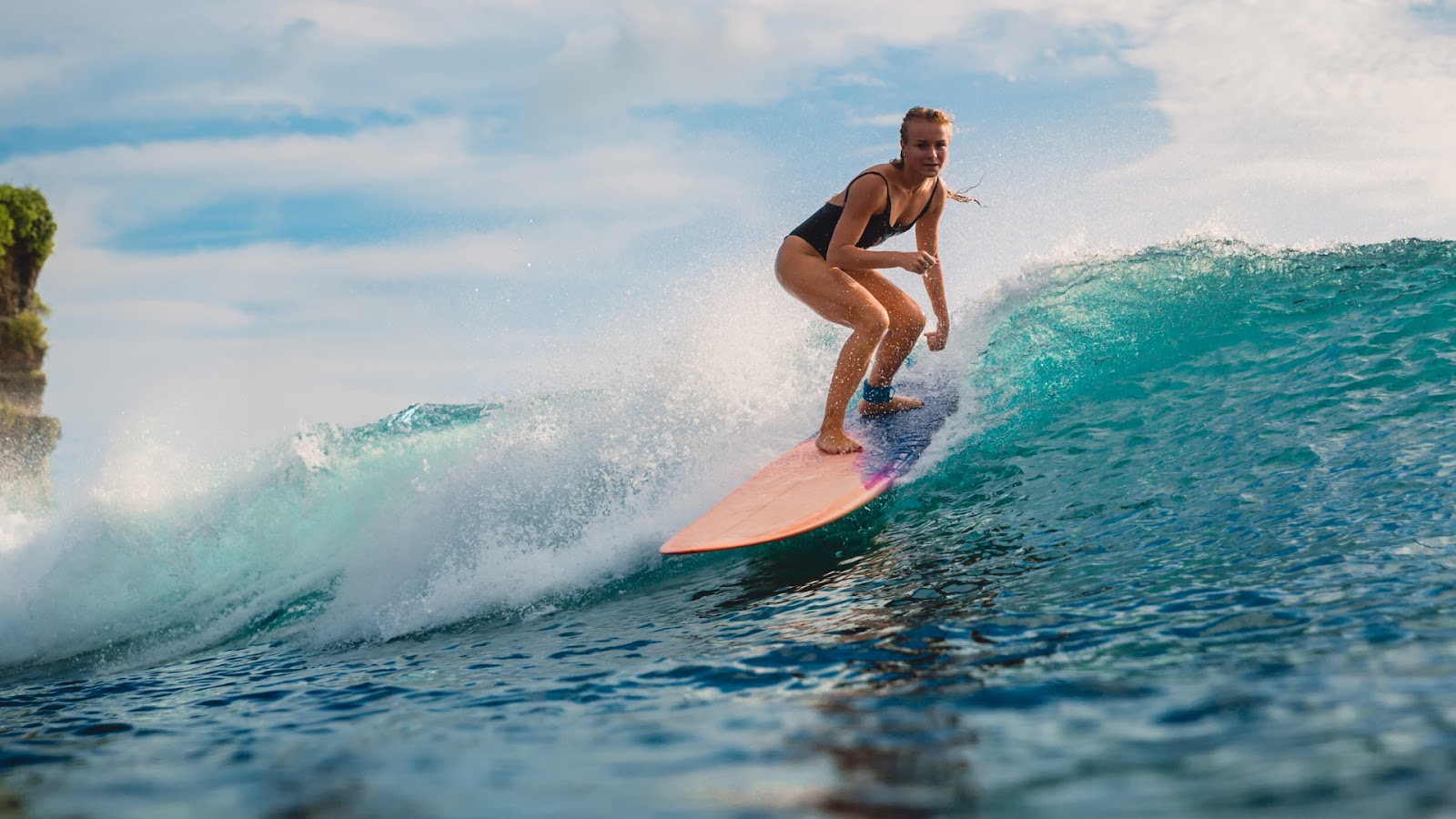
California’s surf scene has it all. Gentle waves for learning. Crazy big waves for pros. Gotta pack different boards – this coastline delivers unmatched variety.
Each part feels unique. Southern California means reliable waves and warm water. The Central Coast mixes beauty with smaller crowds. Northern California? Pure power, if you got the guts.
Ready your California surf trip now. Find breaks matching your skill. Check when big swells usually hit. Know what water temps to expect. Those waves aren’t going anywhere. Just pick which one to ride first.
Tell everyone your top California surf spot below. Was it NorCal’s raw power or SoCal’s steady waves?
FAQ
I’m Traveling To Surf In California. Do I Need To Rent A Car?
Definitely recommended. Sure, you can reach a few famous spots – maybe parts of San Diego or Santa Cruz – using buses or rideshares. But California’s best surf breaks stretch over 840 miles of coastline. To really explore different areas, chase good waves, and find quieter spots, especially up the Central and North Coasts, having your own car is pretty much necessary. Just remember parking near popular breaks can be tough.
Besides Sharks And Cold Water, What Are Other Specific Hazards In Northern California?
NorCal’s coast holds more than just cold water and sharks. Its dangers are unique. Rips and currents get really strong, especially around big wave breaks. Shallow reefs and rocks lurk below, often hidden by murky water or big surf. Waves hit hard here, raising chances of injury or drowning. Many spots are remote. You might find poor cell service and help taking longer to arrive. Weather shifts fast too – dense fog can roll in, or offshore winds pick up suddenly, turning hazardous. Knowing this area well matters a lot.
What About Surf Camps Or Extended Learning Opportunities Beyond Single Lessons?
California’s coast is packed with surf camps! You’ll find all kinds. Multi-day beginner camps, common down south in San Diego or spots like Santa Cruz, exist to learn basics. There are also advanced clinics, often at famous breaks such as Trestles, designed to sharpen skills. Women’s surf retreats offer specific experiences. Some camps are adventure-focused, exploring areas like the Central Coast. Find an operator that fits what you want to do.
The post Best Surfing Spots In California: The Golden State’s Waves appeared first on TravelsType.

